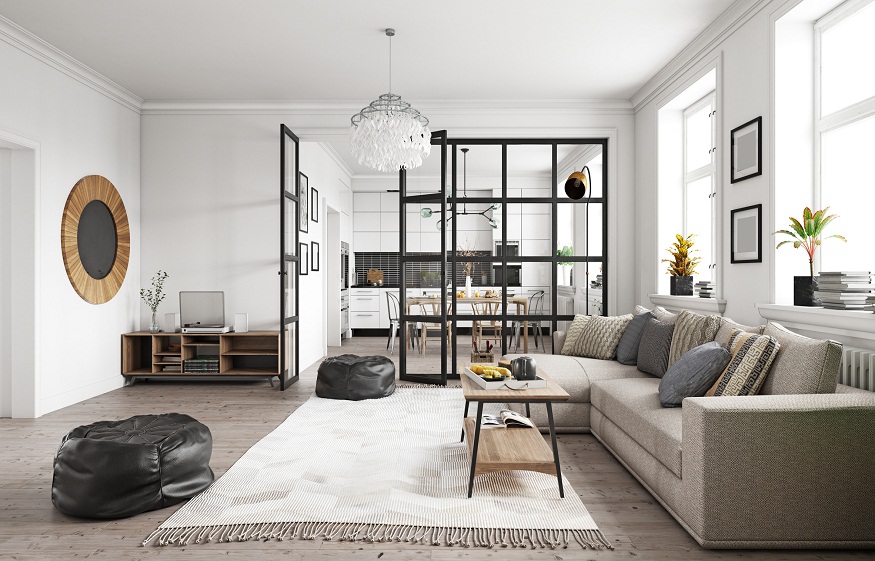If you’ve spent any time scrolling through design magazines or Pinterest, you’ve probably come across the terms modern and contemporary when describing interiors. They’re often used interchangeably, but modern and contemporary design styles are not the same. Each has its own distinct characteristics, history, and approach to creating beautiful living spaces.
Here’s everything you need to know about modern versus contemporary design, plus practical tips on how to apply them in your space.
The Origins of Modern and Contemporary Design
The term modern design refers to a specific era in design history. Its roots lie in the early- to mid-20th century, particularly during the Bauhaus and International Style movements of the 1920s to 1950s. Modern design was a reaction to the excessively ornate details of earlier styles like Victorian or Art Nouveau, focusing on functionality, simplicity, and clean lines.
Conversely, contemporary design is all about the “here and now.” It reflects the trends and innovations of the current moment. Unlike modern design, it’s not tied to a specific period. Contemporary design constantly evolves, incorporating new materials, ideas, and influences as they emerge and resonate in today’s culture.
Think of modern design as timeless and rooted in tradition, while contemporary design is dynamic and always in flux.
Key Characteristics of Modern Design
Modern design is characterized by its minimalist approach and focus on function over decoration. Ornamentation is kept to a bare minimum, and unnecessary details are stripped away in favor of a streamlined, clutter-free appearance.
Here are some hallmarks of modern design:
- Clean Lines: Furniture and architectural elements favor straight, crisp lines with little to no embellishment. Curves, if present, are subtle and purposeful.
- Natural Materials: Wood, leather, linen, and stone are popular materials, creating a warm and organic feel.
- Neutral Color Palette: Modern spaces often lean on neutral hues such as white, beige, gray, and earthy tones. Pops of bold color, like mustard yellow or teal, are used sparingly for contrast.
- Open and Airy Layouts: Modern bedroom design or home interior design embraces open floor plans and spaciousness, often incorporating large windows that flood interiors with natural light.
- Functional Furniture: Think of mid-century modern icons, like Eames chairs or Noguchi coffee tables. Every piece serves a purpose while doubling as a work of art.
Modern bathroom design or home interior design celebrates simplicity and a “less is more” philosophy. It’s timeless and consistent, making it perfect for living room designers and homeowners who appreciate order and understated elegance.
Key Characteristics of Contemporary Design
Contemporary bedroom design or home interior design is more experimental and flexible than its modern counterpart. Because it draws inspiration from what’s trending now, it can pull elements from various styles, including modern, industrial, and even traditional.
Here’s what defines contemporary design today (though this may change over time):
- Blend of Textures: Mixing leather with metal, wool with glass, or velvets with wood to add depth and interest.
- Neutral Plus Bold: Like modern design, contemporary spaces favor neutrals like whites and grays but often incorporate bold accent pieces, such as statement walls or colorful furniture.
- Curves and Organic Shapes: A significant shift from modern design, contemporary interiors lean into soft, organic forms, such as rounded sofas or asymmetrical art pieces.
- Innovative Materials: This style is forward-thinking, often featuring cutting-edge materials like acrylic, concrete, and metals.
- Sustainability: Contemporary spaces often emphasize eco-friendly materials and practices, reflecting the growing interest in green living.
The beauty of contemporary design is its adaptability. It caters to personalization and experimentation, making it ideal for living room designers and homeowners who enjoy trying new looks and pushing boundaries.
The Differences in Application
To better understand how these styles play out in real life, consider how each might influence the same space, like a living room:
A modern living room might feature a sleek leather sofa on wooden legs, a geometric area rug in neutral tones, and a pair of function-focused armchairs in neutral shades. The lighting might consist of pendant fixtures with clean metallic finishes, while a single piece of abstract art adds subtle personality to the space.
A contemporary living room could include a plush, curved sectional sofa in a soft gray fabric, accented by bold throw pillows. Large-format tile or polished concrete flooring adds a modern edge, while a colorful statement wall provides contrast. Lighting fixtures might play with sculptural forms, creating a curated yet inviting look.
These differences highlight modern’s adherence to simplicity and functionality versus contemporary’s more experimental flair.
Should You Choose Modern or Contemporary?
The choice between modern and contemporary bathroom design or home interior design ultimately comes down to personal tastes, lifestyle, and how you want your home to feel.
Choose a modern design if you:
- Appreciate timeless elegance and consistency.
- Prefer clean lines and minimal visual clutter.
- Value high-quality craftsmanship and classic pieces that stand the test of time.
Choose a contemporary design if you:
- Love to experiment with new trends and bold decor elements.
- Want to incorporate cutting-edge materials and sustainability.
- Enjoy a mix of design influences, from the sleekness of modern to the warmth of casual living.
If you’re torn between the two, your living room designer can help blend modern and contemporary elements in one space, creating something that feels balanced and uniquely theirs.
Conclusion
Modern and contemporary design styles each bring something unique to the table. Modern design offers timeless sophistication and simplicity, while contemporary design reflects the energy and possibilities of the present moment. Both have a place in the world of interiors, and both can create beautiful, functional spaces.

